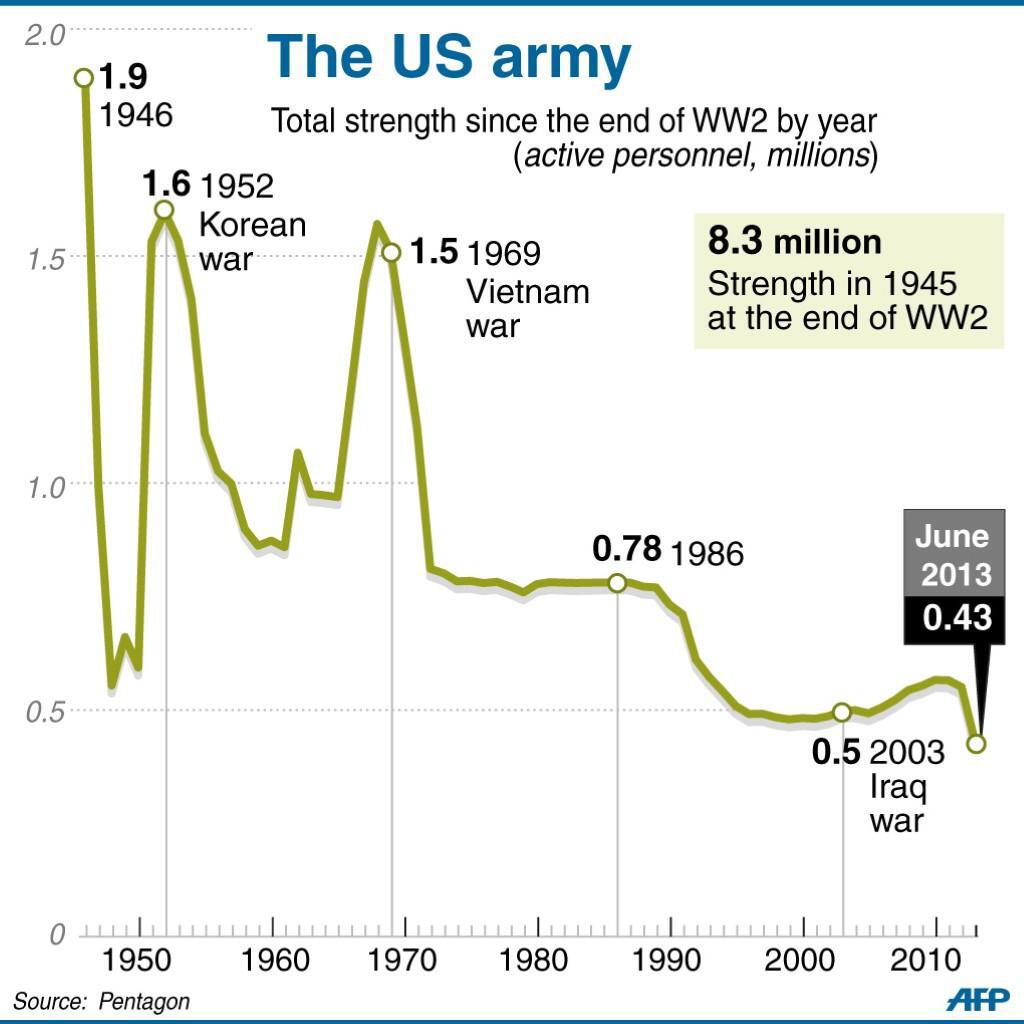
WASHINGTON: Pentagon chief Chuck Hagel on Monday outlined a proposed defense budget for 2015 that will shrink the size of the US Army in favor of new hi-tech weapons.
Here are the highlights of the budget plan, which must be approved by Congress:
Troop numbers
The US Army would be scaled back by 13 per cent from 520,000 troops to 440,000-450,000 soldiers by 2017, making it the smallest force since before the United States entered World War II.
The Army National Guard would be reduced from 355,000 to 335,000 and the reserves from 205,000 to 195,000.
The US Marine Corps would be cut by roughly 10,000 troops for a force of 182,000.
However, the elite special operations forces -- which draw from different branches of the military - would see an increase of 3,700 troops, to a total of 69,700.
Pay and benefits
Pay for the Defense Department's 750,000 civilian workers is already frozen for three years. But officials are anxious to rein in the growth in pay and benefits for military personnel, which is eating up an increasing share of the Pentagon's budget.
The proposal calls for a one per cent increase in basic pay for troops but excludes a raise for generals and admirals. After 2015, future pay hikes for troops would be "restrained."
Housing allowances for troops would be modestly reduced, subsidies for shops that sell groceries to troops would be scaled back and health insurance fees would increase for retired personnel and some family members.
Army
Apart from reduced troop levels, the US Army also stands to lose its planned "ground combat vehicle," a programme that was supposed to produce a hi-tech armored vehicle for the future. The project would be scrapped and commanders would have to draw up a new plan.
The National Guard's fleet of Apache helicopters would be shifted to the active duty army, while the guard would receive Black Hawk helicopters instead.
With older helicopters dropped, the army's overall chopper fleet would decline by 25 per cent and the National Guard's by eight per cent.
Navy
The US Navy would retain its 11 aircraft carriers. But a decision would have to be taken by 2016 whether to retire the USS George Washington or invest in upgrades worth $6 billion.
The number of new littoral combat ships (LCS) would be curtailed to 32 instead of 52 as initially planned. Hagel questioned if the small, speedy vessel has the firepower and protection to survive against more advanced adversaries, "especially in the Asia-Pacific."
Eleven cruiser ships would be "laid up" for modernisation work. The cruisers oversee air defenses for carrier strike groups.
The Pentagon would continue plans to purchase two destroyers and two attack submarines a year, as well as a "floating base" that can accommodate special forces.
Air Force
The proposed budget protects costly and sophisticated new aircraft including the F-35 Joint Strike Fighter, a new long-range bomber, and the new KC-46 refueling tanker.
But 326 "tank-killer" A-10 aircraft, which date back to the Cold War, would be retired, for a savings of $3.5 billion over five years. The A-10's close air support role would be carried out by the F-35 fighter or other warplanes.
Another old work horse would be abandoned - the famed U-2 spy plane, which first entered into service in the 1950s.
The Pentagon had given the U-2 a new lease on life in 2012 but is now pinning its hopes on the Global Hawk surveillance drone, arguing that the plane is more capable and its operating costs have decreased.
The Air Force would slow the expansion of its fleet of armed drones while investing $1 billion in new jet engines to save fuel and maintenance costs.


































































COMMENTS
Comments are moderated and generally will be posted if they are on-topic and not abusive.
For more information, please see our Comments FAQ